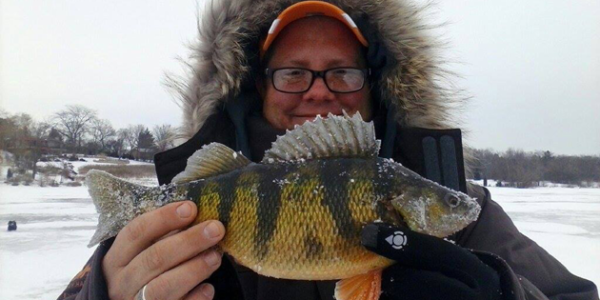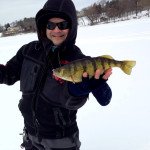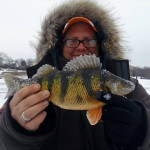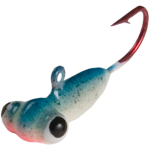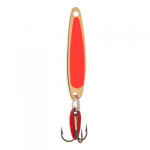Before we get into the fun stuff, we need to take a minute to discuss first ice safety. Safety should be the first thing on your mind while ice fishing, and this is never truer than during first ice. To understand ice safety, we must first understand ice and how it forms.
Ice forms on the surface as water is cooled less than 32 degrees by the cold air. Lack of wind and snow create ideal ice conditions helping form layer upon layer of clear, strong ice from the bottom of the first ice down. Ice, however, rarely forms uniformly, so it is vitally important to be aware of springs, seeps, current areas, and other conditions that could impede ice formation. Early snow cover can act as insulation, slowing ice formation as well.
Always carry safety equipment when venturing onto early ice. The best policy is to never be alone. A buddy with a cell phone and a length of rope can be a lifesaver. Consider investing in a good spud bar or ice chisel. They are commercially available for under $50, but you can use any heavy metal rod or wrecker bar at least 3 feet in length. Test the ice every few steps with a good whack of the bar, which should take two or three hits to punch through 3” of good ice. Anything less and call it off. Always carry a set of ice spikes around your neck in case you go in, and also consider foot spikes to prevent a nasty fall on slick new ice.
Some of the new ice fishing outerwear garments and suits such as those from Stormr and Arctic Armor has floatation capabilities. Consider and investment in something of this nature.
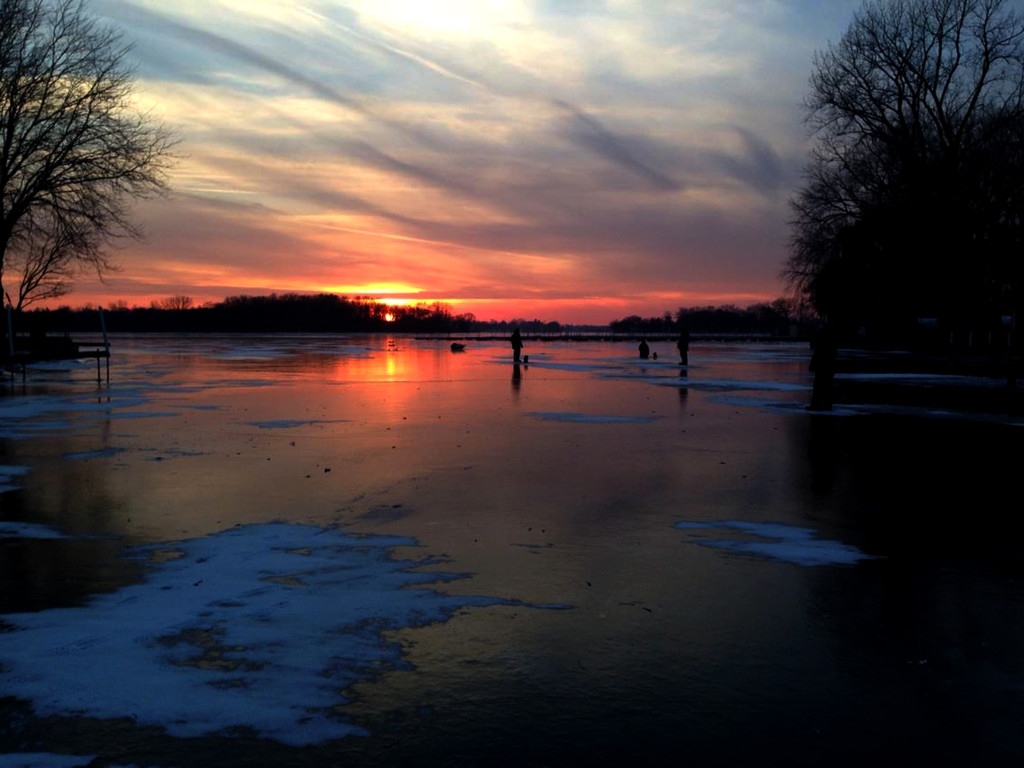
Gear
Speaking of investing in gear, the right apparel and accessories can make all the difference when ice fishing. Nothing will cut a trip short faster than being cold, wet, or both. Today, ice anglers have a wide variety of choices in foul weather gear. First and foremost is footwear. Do not skimp here, as cold, wet feet will make you miserable faster than anything else. Many boots are warm when you are active, but ice anglers can spend long periods of time in one place, so make sure you get boots that are well insulated. I prefer Baffin Titans, which feature all rubber outer construction and are rated to -140. Quality outerwear choices are available on the market, and standby ice separates from Clam and Arctic Armor are joined with new entries from Frabill and Stormr. All are rated wind and water resistant, but only Stormr and Arctic Armor have floatation capabilities, which is something to consider when on ice.
Panfish
Assuming that you have found good ice, it’s now time to find fish. Favorite early season spots are similar to the best early spring locations: Channels, back bays, sloughs, and marshes connected to main lake areas. I usually look for water 5 feet in depth or less. In Northern Illinois, some of the best locations for first ice panfish are back channels and sloughs connected to major rivers. Many good first ice locations are popular “community” spots, and so be prepared to share the water. Usually, I am not a fan of big crowds, but somehow, first Ice feels like a big party so enjoy the camaraderie. I like to start aggressive for early season Bluegill and Crappie, going with larger jigs tipped with plastics or wax worms. I do keep a rod rigged with ultra finesse offerings, such as wispy 3 mm Tungsten jigs in case fish turn finicky. Usually though, the action is pretty fast but fish tend to move frequently. In shallow locations like back water areas, fish tend to roam and scatter, so make sure you have plenty of holes drilled.
Predators
The influx of panfish and baitfish into shallow backwater areas naturally draws predators such as Bass, Pike, and Walleye. These fish tend to lay in deeper areas or main lake/river locations near the mouths of backwaters, but will mount assaults on the shallow holding panfish. Early and late light times are key, however dark days, weather and light changes, and Moon phases will trigger bites. Because I am usually fishing aggressively with larger offerings for panfish, I will frequently get hit by predators on the same baits, so be ready. I will also set up tip ups on the outside edges of where I am fishing. This can be deadly when rigged with a lively Shiner or Chub. I tend to keep baits small, maybe 3”, so they also can become targets for big Crappie who may also be moving into the area. Key tip up areas are extreme shallow flats adjacent to main channel areas, and the deepest part of the channel.
First ice is almost upon us, so get the gear out and dusted off, rig up your rods and get ready for some of the years best action. As always, keep ice safety on your mind at all times and be prepared to hit the ice with confidence.
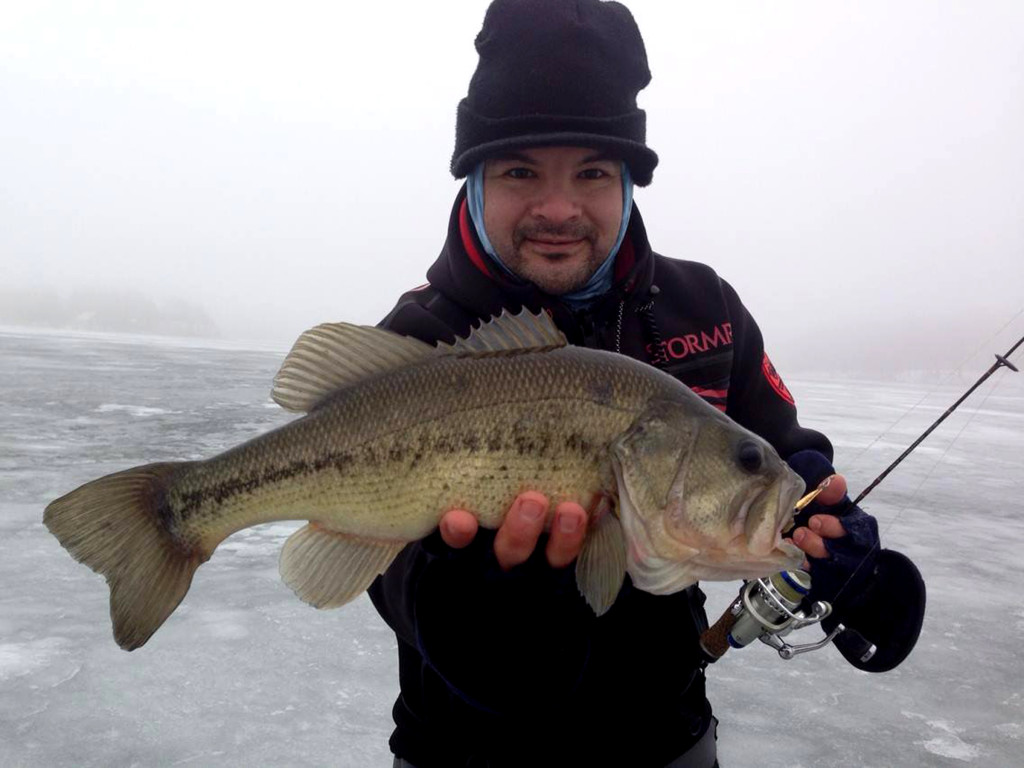
![]()
About Joseph Alfe
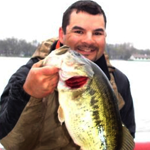
Joseph Alfe, a resident of Northern Illinois, has spent his whole life in pursuit of angling and outdoors knowledge. As a Pro Staffer and brand rep for various industry and outdoors companies, he promotes and shares products that he believes in and that can make you a better fisherman and outdoorsman. For him, it’s all about education. Knowledge is great but you have to be able to get it across in a way that people can understand and be entertained by. Joe’s true passion is bringing relevant and fresh fishing industry news and techniques to his readers through his promotional website, anglerZconnection.com.


